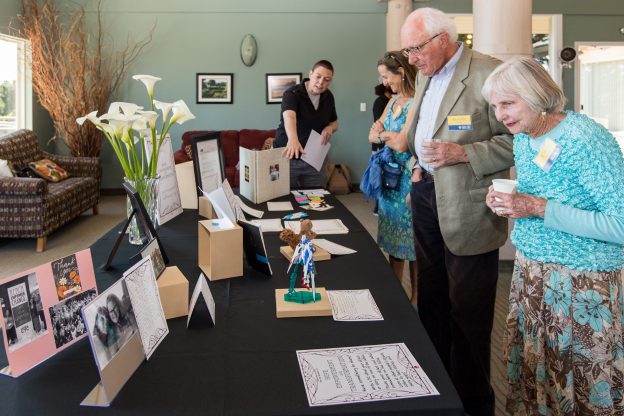The following blog post was written by C3 2017 artist, Melody Overstreet. She summarizes her experience with the process of developing her artwork, Interwoven Voices alongside current and former foster youth during our C3 meetings.
One question that I have sat with throughout this exhibition, and that I continue to carry with me is, how do we inspire a shift from care and good intention to a place of deliberate action? What do we do in the face of a challenge that is so massive in scale? One approach is to take actionable steps, one at a time.
As an artist and educator, I have learned a lot from the Creative Community Committee meetings, the art-making process, and the presentations by youth and youth advocates. Throughout this experience, youth identified and directed the elements most essential to communicate through this exhibition. I am grateful for the opportunity I had to hold space and listen. There are basic physical needs to survival and well being. In my conversations with youth, the importance of psychological perspectives surfaced. It is paramount that we support the physical well-being of youth, while also meeting emotional, psychological, and spiritual needs through the ways in which we approach our relations, and hold space for their unfolding as whole human beings.
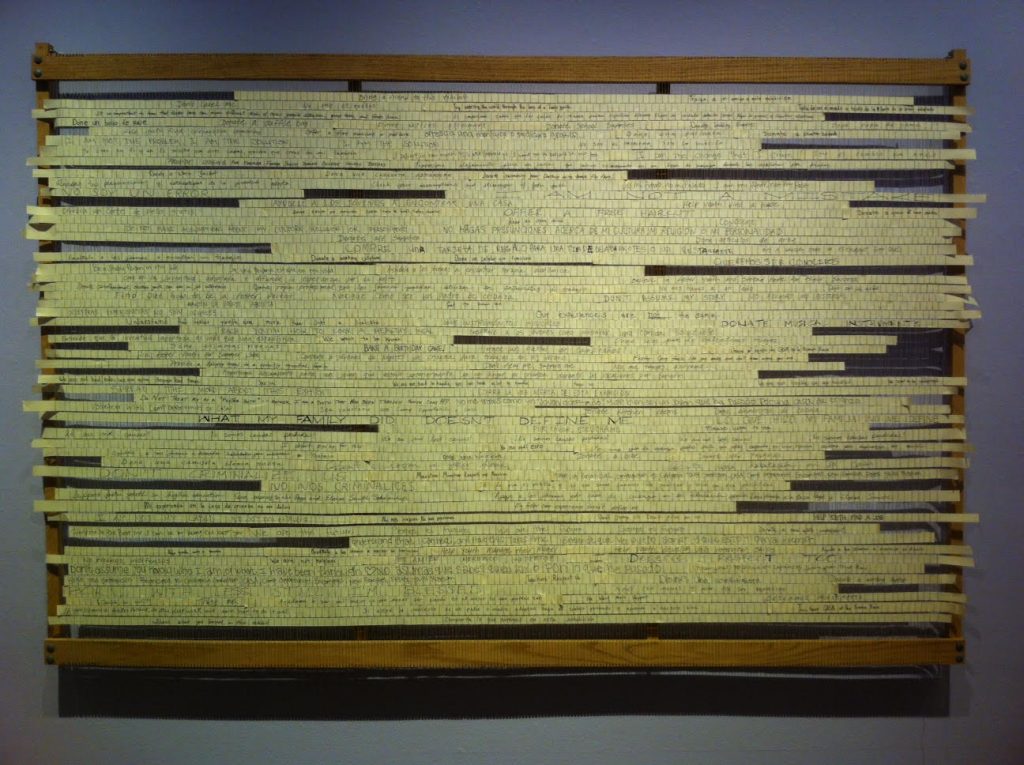
During some of our C3 meetings, several youth inquired about weaving. Creating a collaborative weaving made itself steadily more evident as a fitting medium and process to amplify the self-identified needs of transition-aged youth. This collection of interwoven voices highlights youth-identified needs and perspectives, offering a list articulated and hand-written by youth that provides opportunities for meaningful action.
 Weaving lends itself as a powerful metaphorical act. I think about individuals as part of a larger society— like single threads woven as part of a larger tapestry. I see that as people we have more in common than apart, and that our various lives inevitably intersect. I am inspired in a life-long call to action to meet the needs of youth, to support their individual and collective resiliency, for a society that is rooted in an ethos of care and responsibility for one another. I see clearly that we cannot have a healthy society unless we care for all children. When a vision is shared, the actions of individuals accumulate and have the collective power to shift the tides.
Weaving lends itself as a powerful metaphorical act. I think about individuals as part of a larger society— like single threads woven as part of a larger tapestry. I see that as people we have more in common than apart, and that our various lives inevitably intersect. I am inspired in a life-long call to action to meet the needs of youth, to support their individual and collective resiliency, for a society that is rooted in an ethos of care and responsibility for one another. I see clearly that we cannot have a healthy society unless we care for all children. When a vision is shared, the actions of individuals accumulate and have the collective power to shift the tides.
What is our responsibility to future generations? How can we meet the needs of our current generation, and work to change ourselves and the system to deeply address the personal and cultural shifts necessary to provide for future generations?
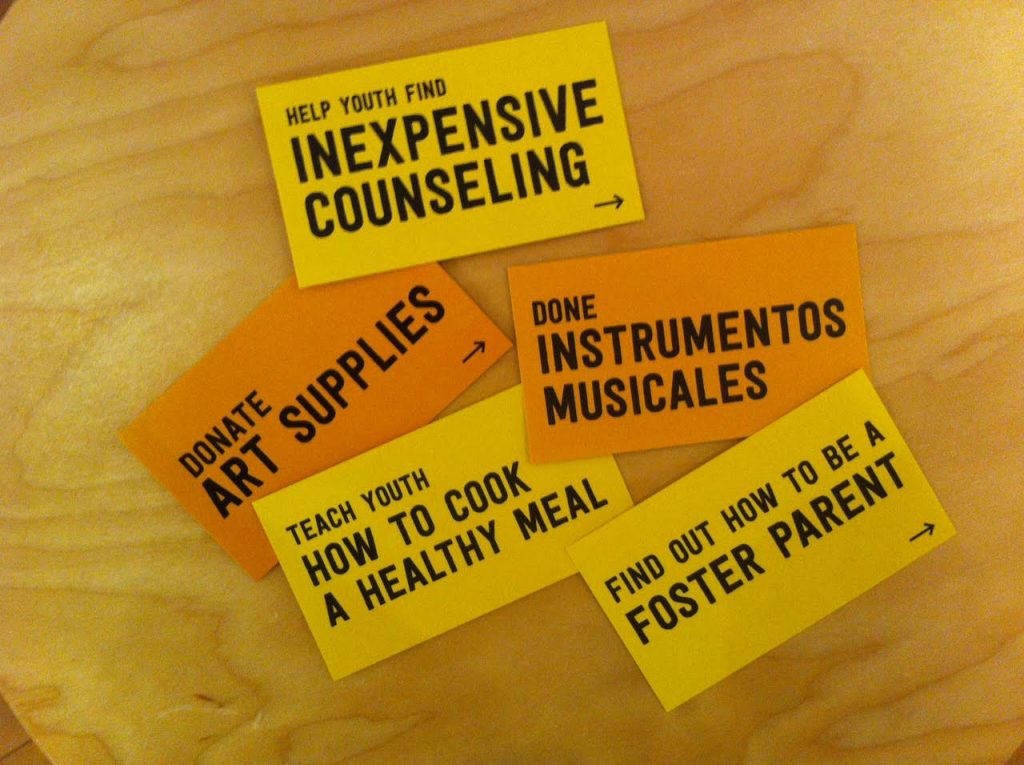
This work communicates about the “little things” that we can do to support youth aging out of the foster care system. The idea to focus on the “little things” was inspired by MAH intern Karen’s personal insight. Karen shared the idea that as a youth, when experiencing hardships, that the “little things” made a huge difference in her daily life— this included when someone baked her a cake for her birthday, which is a reminder of the soft power of thoughtful gestures.
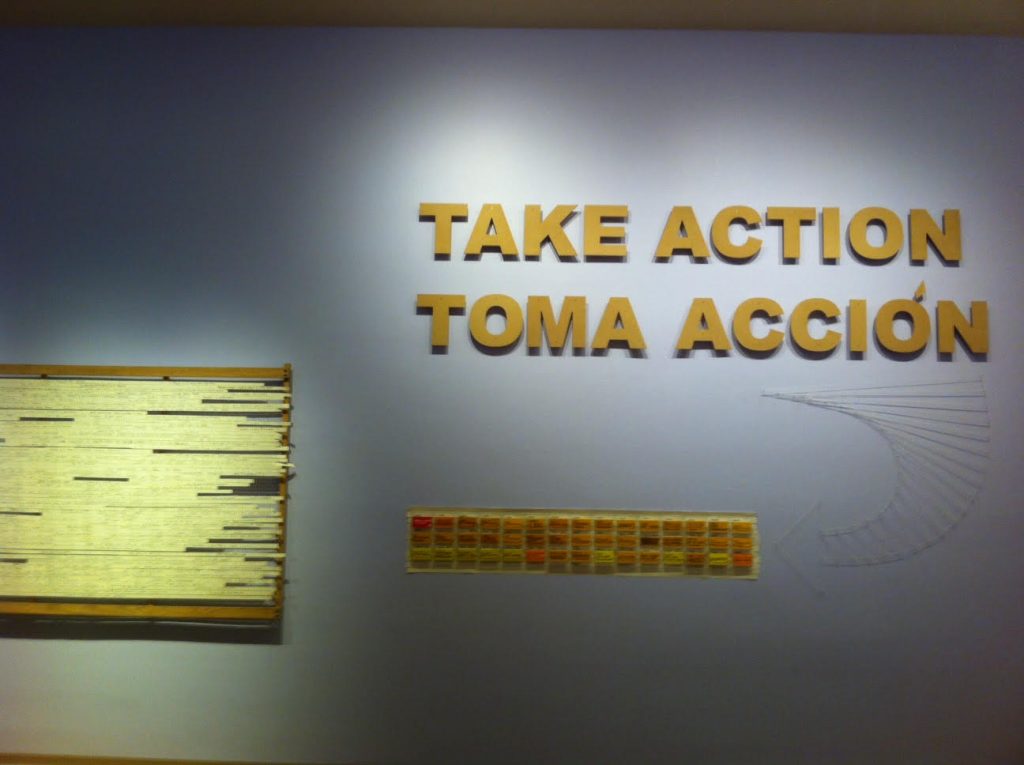
Alongside the installation, Interwoven Voices, is an installation of Take Action cards. These take-away action cards include the “little things” articulated by youth and youth advocates that have the power to make a meaningful difference in a youth’s current transition and life. The MAH has made these suggestions accessible by printing them on a corresponding card with details of how to achieve that specific action. We are being called to action in a number of ways— through the “little things” first and foremost to support youth in transition, as this is a current and pressing need. We also need to take a deep critical look at the root causes of disruption in family life.
Certainly, these youth carry much wisdom, perspective, and insight, and I am honored to have had the opportunity to hear their ideas and work alongside them. Many youth are demonstrating courage and thoughtful leadership by using their voices to advocate for themselves and for future generations.
In conversation with community member Devin Gonzales, I had an opportunity to broadly discuss the systemic issues and challenges that children and some parents face, challenges that can disrupt family life, and ongoing issues of oppression that variably impact lives. It is not surprising that youth of color are disproportionately represented in the foster care system, as this is an extension of racism. While we take much needed action on the “little things,” it is equally essential that we dismantle the complex and interworking systems of oppression.
Collaborating with Youth and Youth Advocates, partaking in C3, learning from the thoughtful Foster Youth Museum, and working alongside the Museum of Art & History has been a profound opportunity for me, for which I am humbled. This work is ongoing, and I am grateful that the space is being held to bring focused attention and growing awareness to the experiences of youth, as this is one way to heal our current and future generations.
I have been reflecting a lot on a poem by Lu Hsun, that reminds me that Hope requires that we move our feet:
“Hope cannot be said to exist, nor can it be said not to exist. Rather, it is like a dirt road across the Earth. For originally, there were no dirt roads. When many people walk one way, a path is formed.”
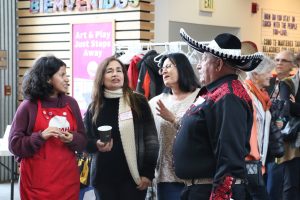 Jeff shared an overview of related events coming this Spring and Summer. Then he asked everyone to join him in a workshop. The focus was to give him advice for the upcoming programs. C3 members enjoyed tasty snacks and a sneak preview of the artwork that they had helped create. This is the artwork that will be on display during the exhibit. Artists Ry, Cid, Wes, Gina and the Pajaro Valley Quilting Association all shared C3 work. Some seniors dropped off their personal paintings for the exhibition. Everyone got a chance to take an old-school Polaroid photo that will be include in the wall of C3 participants. If you didn’t get to take your picture taken then, please pose for the Polaroid photographer at the C3 members special opening on April 4, from 4-7pm.
Jeff shared an overview of related events coming this Spring and Summer. Then he asked everyone to join him in a workshop. The focus was to give him advice for the upcoming programs. C3 members enjoyed tasty snacks and a sneak preview of the artwork that they had helped create. This is the artwork that will be on display during the exhibit. Artists Ry, Cid, Wes, Gina and the Pajaro Valley Quilting Association all shared C3 work. Some seniors dropped off their personal paintings for the exhibition. Everyone got a chance to take an old-school Polaroid photo that will be include in the wall of C3 participants. If you didn’t get to take your picture taken then, please pose for the Polaroid photographer at the C3 members special opening on April 4, from 4-7pm.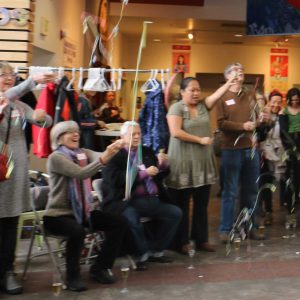 of our guests sang a beautiful ballad in Spanish about. Then we all raised our Champagne glasses for a toast…but wait…the glasses were all empty. Why? Because that is what the exhibition is about. Noticing the empty glass of another person, and taking the time to fill it with bubbly, sweet connection. So that’s what we did: we filled each other’s glasses with organic, locally bottled sparkling apple cider. Jeff recollected that this day was a lot like a rocket mission launch. Do you remember the Apollo missions? We all celebrated our C3 Mission: to replace isolation in our county. With party poppers in hand we all said the most important words of any lift off: 10…9…8… Well you can see the result in the photos above. Cake was eaten, smiles and hugs were exchanged.
of our guests sang a beautiful ballad in Spanish about. Then we all raised our Champagne glasses for a toast…but wait…the glasses were all empty. Why? Because that is what the exhibition is about. Noticing the empty glass of another person, and taking the time to fill it with bubbly, sweet connection. So that’s what we did: we filled each other’s glasses with organic, locally bottled sparkling apple cider. Jeff recollected that this day was a lot like a rocket mission launch. Do you remember the Apollo missions? We all celebrated our C3 Mission: to replace isolation in our county. With party poppers in hand we all said the most important words of any lift off: 10…9…8… Well you can see the result in the photos above. Cake was eaten, smiles and hugs were exchanged.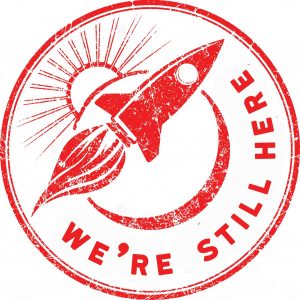 We’ll all come together with our friends and families at the big C3 and MAH members’ opening on April 4 from 4-7pm. Register here if you are going to bring a friend or family member!
We’ll all come together with our friends and families at the big C3 and MAH members’ opening on April 4 from 4-7pm. Register here if you are going to bring a friend or family member!
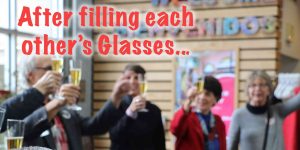
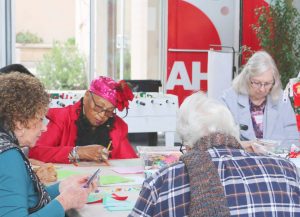
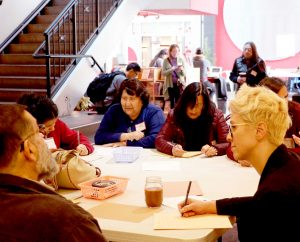
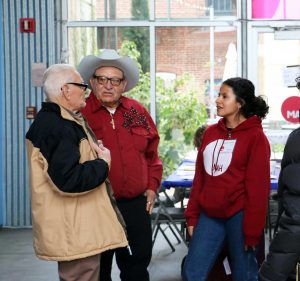
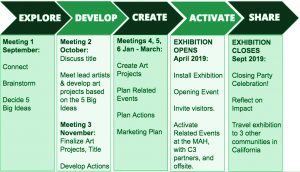
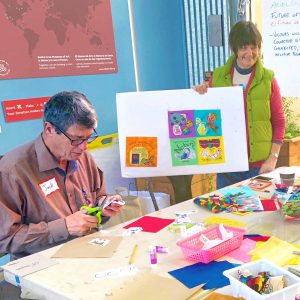
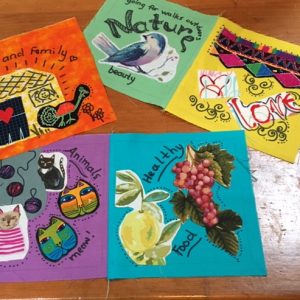
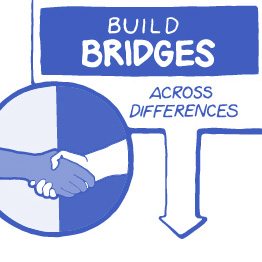
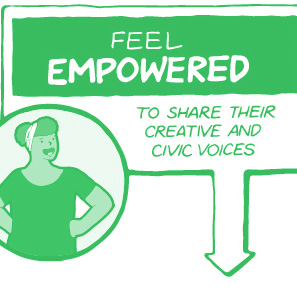
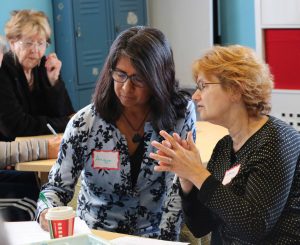
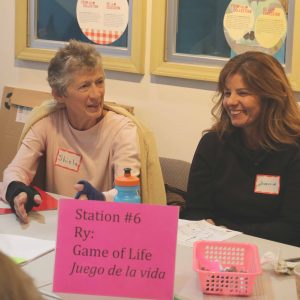
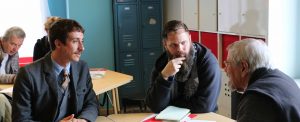
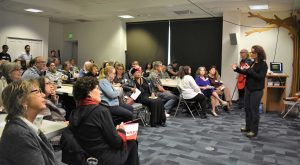
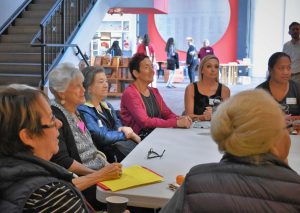
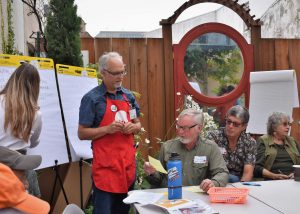

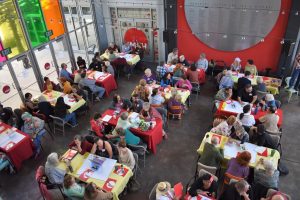
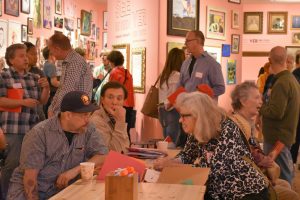
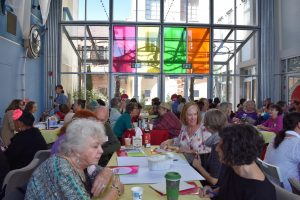
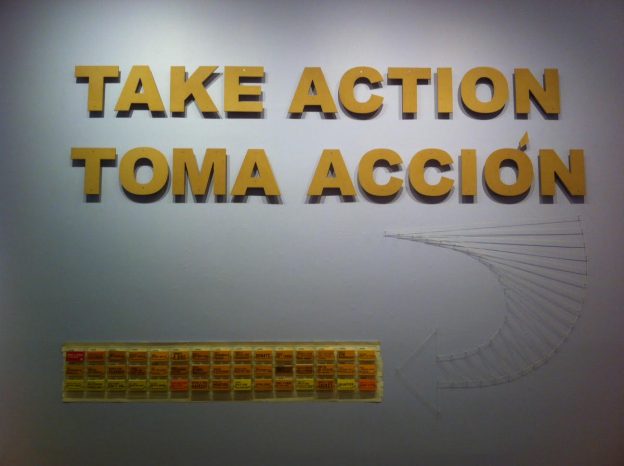

 Weaving lends itself as a powerful metaphorical act.
Weaving lends itself as a powerful metaphorical act. 





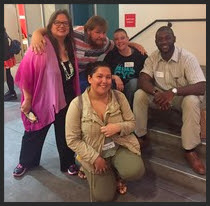
.jpg) Assemblymember Mark Stone agrees. The author of AB 403, a bill that dramatically changed the foster care system in California, said, “through art, we can communicate much more effectively about what it is we’re trying to do and what it is we need to do.”
Assemblymember Mark Stone agrees. The author of AB 403, a bill that dramatically changed the foster care system in California, said, “through art, we can communicate much more effectively about what it is we’re trying to do and what it is we need to do.” 